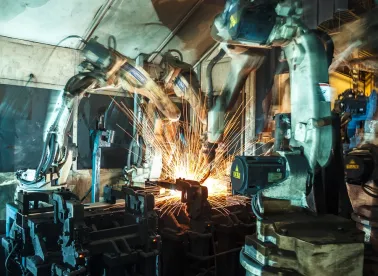With a large portion of the manufacturing workforce reaching age 55 and older, and with the challenges the COVID-19 pandemic brought in 2020, the industry has been confronted with a shortage of interested and skilled applicants. The new year provides a great opportunity for companies to evaluate or adopt diversity and inclusion (D&I) initiatives. There has been a push in recent years for companies to adopt D&I programs and manufacturers are in a unique position to utilize these programs.
Diversity and inclusion efforts not only strengthen a workforce by positively shaping the workplace culture and ensuring equal opportunities, but they can assist in meeting the increasing demand of attracting and retaining highly skilled workers. They can help expand the pool of interested and talented candidates and encourage these new workers to remain in the company’s pipeline.
While D&I efforts will be unique to each company, manufacturers should consider the following when developing or evaluating their initiatives:
-
Lead from the top. In order for D&I initiatives to be effective, companies must ensure top leadership buy in and support the initiatives. At the initial stages, leadership should discuss and develop a specific “why” for implementing a D&I program into its organization and how it fits into the current culture. Having this discussion with leadership early increases the probability of success as commitment from top officials is necessary to hold leadership accountable in implementation and conveys the message to employees that D&I is important. Due to the manufacturing industry’s focus on output, production, and metrics, D&I efforts often may stall after the initial discussion with leadership and never be pushed down throughout the organization. The pandemic has further exasperated this problem by the additional burdens placed on manufacturers to ensure safety and the continuity of their operations. In order to ensure D&I initiatives remain a priority for manufacturers, companies should consider implementing or assigning a position at the C-suite level responsible for the program. If this is not feasible, a detailed plan should be designed at the initial discussions with leadership and assignments made to hold individuals accountable for implementation of the plan.
-
Understand and address what undermines D&I initiatives. Even the best D&I initiatives will fail if discrimination, unconscious biases, and micro-aggressions are left unaddressed in the workplace. For industries like the manufacturing industry, which have traditionally attracted a homogenous workforce, addressing unconscious bias and identifying impediments is even more crucial to attract and retain diverse talent. When employees feel they are not represented or where there are lingering biases or discriminatory practices, D&I programs will not succeed and may even be viewed as artificial. Successful D&I programs should include periodic trainings on how to identify and address unconscious bias. Additionally, some states require employers to implement harassment training that include D&I discussions. Even in states where this is not mandatory, manufacturers should consider providing this training in combination with their D&I efforts. Manufacturers also should evaluate the culture of their workforce. Due to the structured nature of factory work, it is common for employee “groups” to form, whether based on shifts, job, or trade classifications, or even union or non-union affiliation. While the presence of these groups is not necessarily an impediment to D&I initiatives, manufacturers should be aware of any interference or push back during the implementation of D&I programs that may arise due to internally competing loyalties.
-
Measure the outcomes of D&I initiatives. Successful D&I initiatives require manufacturers to measure and then evaluate the outcomes of their programs. This includes not only looking at the percentage of representation within the organization, but also establishing subjective measures, including employee engagement surveys, exit interviews, and yearly reviews. Additionally, manufacturers should evaluate how other strategic business decisions (e.g., recruitment efforts) align with their D&I initiatives.
-
Provide annual supervisor training. Supervisors are at the forefront of creating an inclusive workplace free from discrimination and harassment as they engage with employees daily on the factory floor. Supervisors should be provided annual training on equal employment opportunity, discrimination and harassment, the company’s specific D&I initiatives, how to understand signs of unconscious bias and discrimination, their responsibilities to address inappropriate behavior, and how to respond if inappropriate behavior is reported or observed.
-
Implement training specific to your workforce. Not all methods of training will work for each organization. It may not be feasible for manufacturers to provide training to employees all at once in order to keep production flowing or based on current COVID-19 restrictions. Manufacturers should consider providing training in different formats whether live in small group discussions, virtual on-line, small “web” messages, or a combination to continue to underscore the importance of D&I in the culture, promote interest from all workers, and keep the conversation open to how it can continue to mold and implement its efforts for the common goal: attracting, retaining, and engaging a diverse and productive workforce.





 />i
/>i

